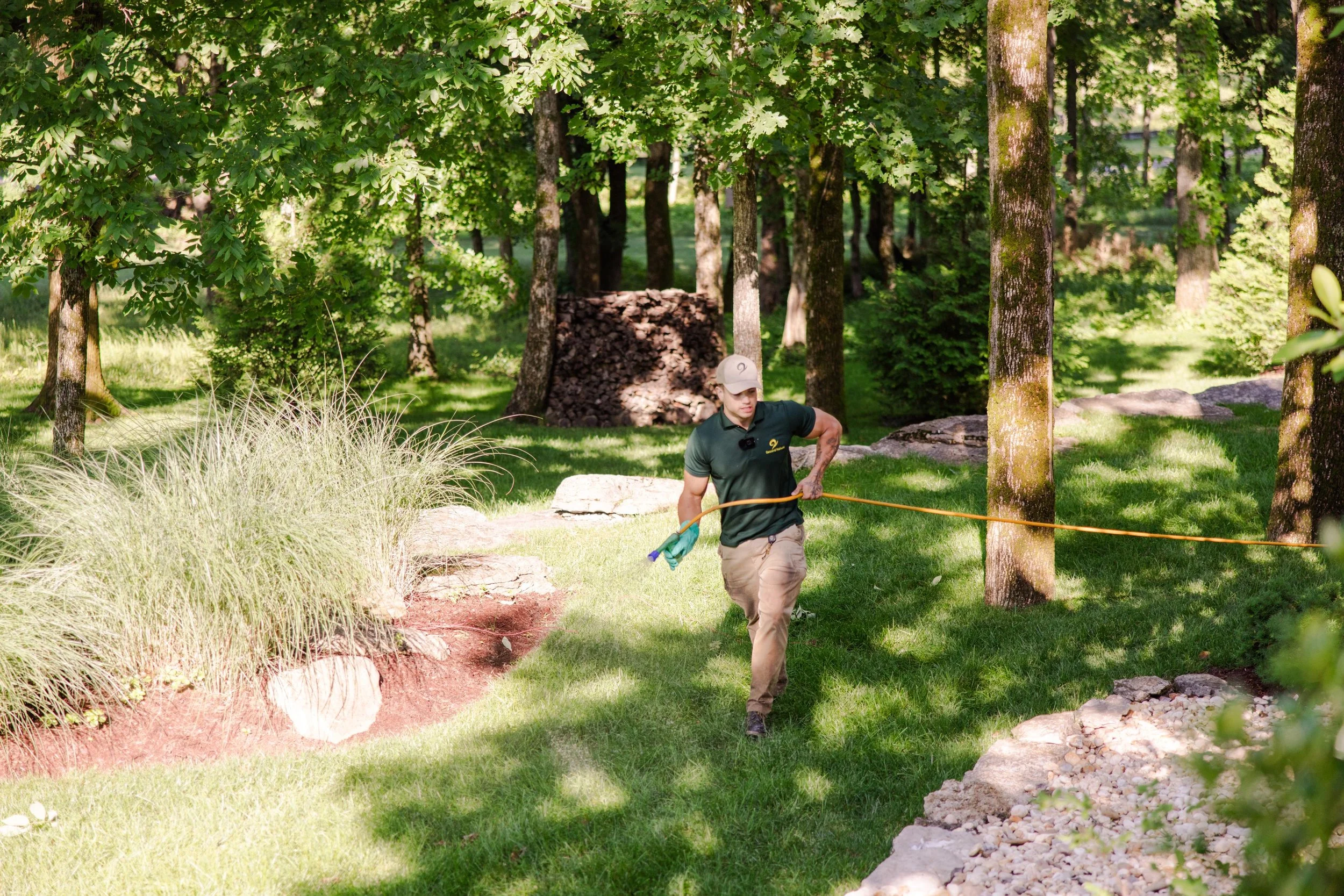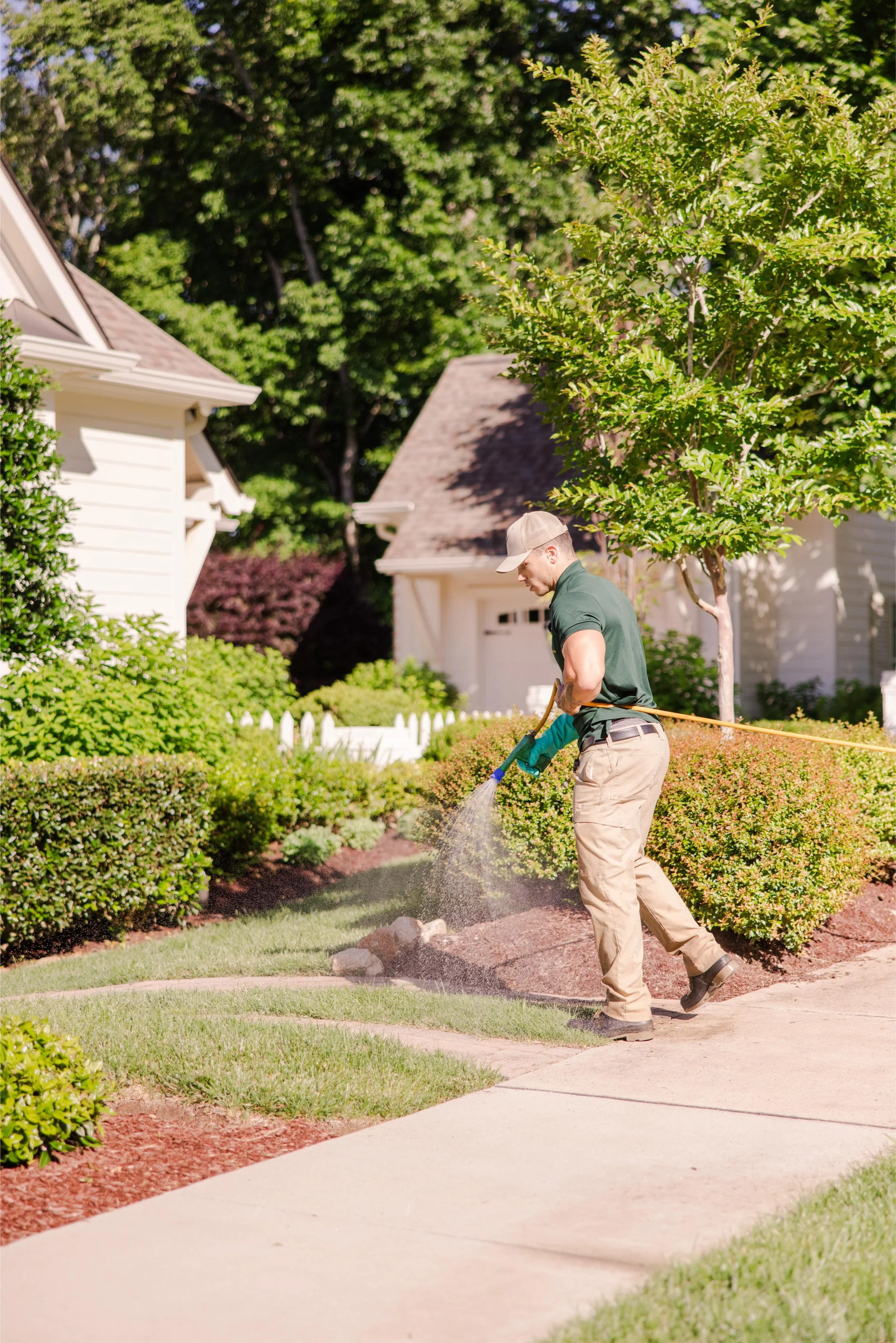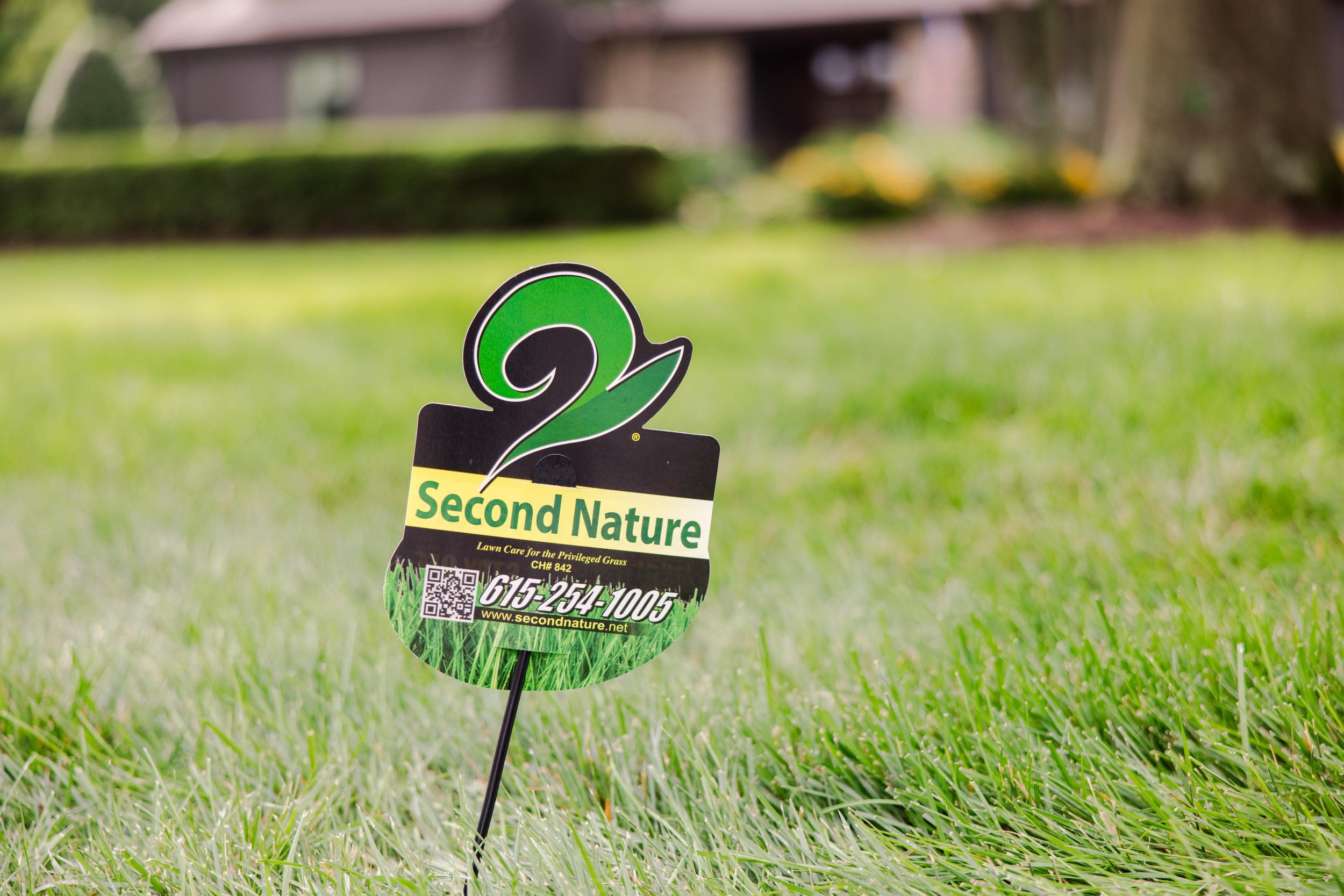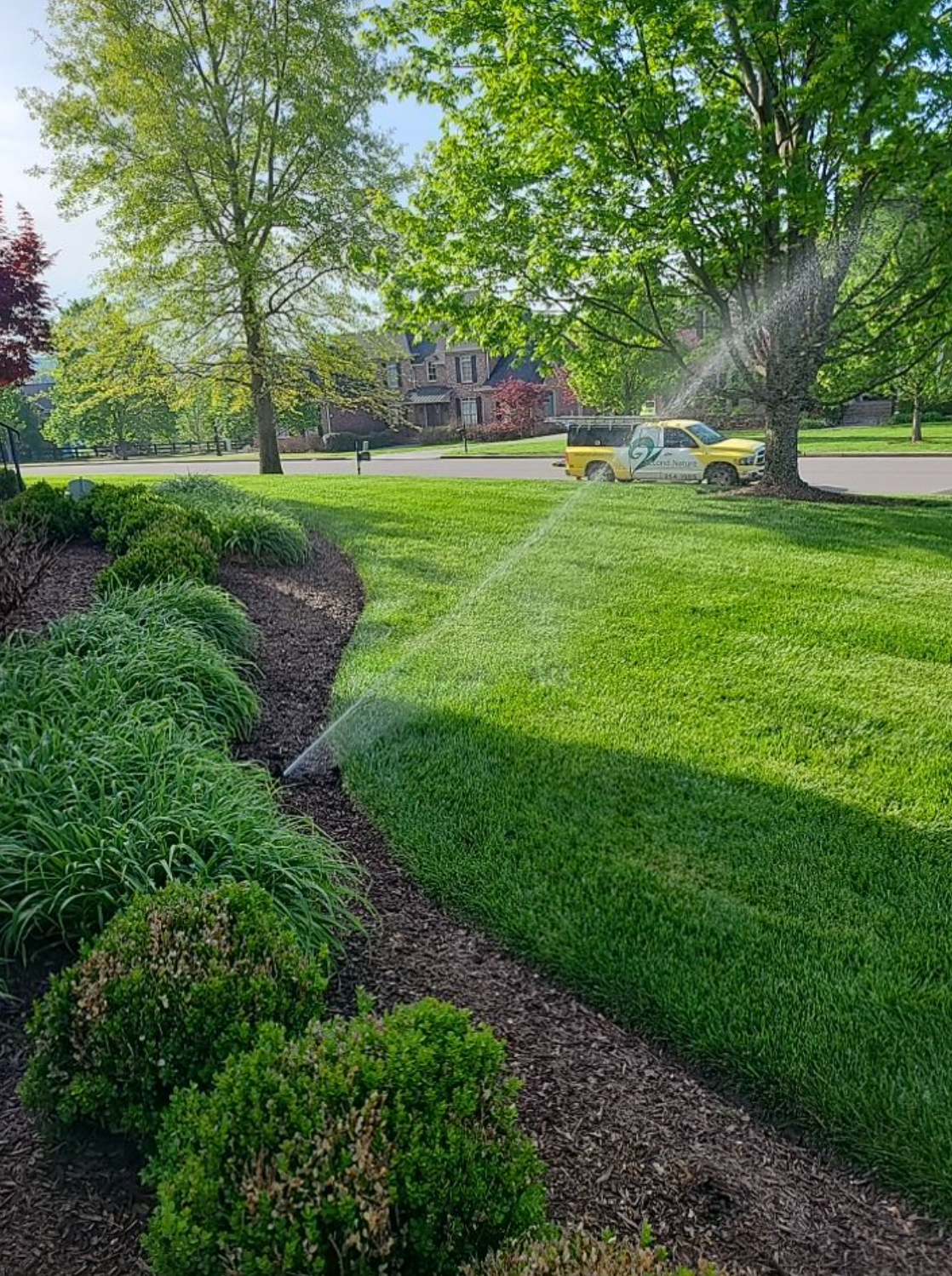
Tennessee Lawn Watering Guide:
How and When to Water for Healthier Grass
Water is one of the most important tools for maintaining a healthy lawn.
But not all watering methods are effective, and improper timing or frequency can lead to shallow roots, turf disease, or wasted effort.
This guide explains how to water your lawn correctly throughout the growing season, with specific instructions for both established turf and newly seeded areas. All recommendations are tailored to typical soil and climate conditions in Tennessee.
Disclaimer: These watering recommendations are general guidelines based on typical soil and climate conditions in Tennessee. Every lawn is unique, and factors such as soil composition, slope, and sunlight can significantly impact watering needs. Adjust your schedule as needed for your specific property.
Watering Established Lawns
Turfgrass in Tennessee typically needs about one inch of water per week to stay green, healthy, and disease-free. That includes rainfall, so if the weather has been dry, supplemental watering is essential.
Frequency and Timing
Consistent scheduling is key to strong, disease-resistant grass.
Water three times per week (for example: Monday, Wednesday, Friday)
Water early in the morning, ideally before sunrise
Avoid evening watering, which can lead to overnight moisture and fungal growth
Watering before sunrise allows grass blades to dry during the day while minimizing water lost to evaporation. Turf that stays wet overnight is more vulnerable to fungal disease.
Duration Per Zone
Slow, deep watering supports healthy root growth.
Run each irrigation zone for 30 to 45 minutes per session
The goal is to apply about one inch of water per week, divided across three sessions
Quick tip: Place empty containers (such as tuna cans) around the lawn during watering. Stop when each has about 1/3 inch of water. Doing this three times per week ensures you're meeting the one-inch weekly target.
Alternative Watering Method for Heavy Clay Soil
If your yard has heavy clay soil, you know how frustrating watering can be. The water runs off before it ever has a chance to soak in, leaving your grass thirsty. That’s where the “cycle and soak” method comes in.
Here’s how it works:
Water each zone for 10 minutes to start the process.
Move through the rest of your zones while the water soaks into the soil.
Come back for a second round and water each zone for another 20 minutes.
This two-step approach gives the soil time to absorb moisture gradually so roots get the water they need without waste or runoff.
While established lawns need deep, infrequent watering, newly seeded areas require a completely different approach. Here’s how to adjust your watering for seeding success.

Watering for New Seed
Proper watering is the most important factor in whether your seeding project succeeds. Watering for new seed happens in phases.
Below is a step-by-step guide to help you support healthy germination, transition growth, and long-term establishment.
Step 1: Germination Phase (Weeks 1–2)
New seed needs constant surface moisture. Watering daily prevents drying and ensures germination success.
Water as many times as needed to keep soil moist, recommended 1-3 times daily
Water for 10 to 15 minutes per zone
Avoid puddling or runoff
The goal is to keep the top layer of soil consistently moist, not soggy. If the soil dries out during this stage, seeds may fail to germinate or die before establishing roots.
Step 2: Transition Phase (Weeks 3–4)
As soon as seedlings appear, it's time to shift from frequent light watering to less frequent, deeper watering.
Water every other day
Begin to increase watering time per zone
Allow the surface to dry slightly between sessions
This transition phase encourages the young grass to develop stronger roots that reach deeper into the soil.
Step 3: Establishment Phase (Week 5 and Beyond)
Once your new grass is growing well, begin transitioning to the standard watering schedule used for mature lawns.
Water two to three times per week, gradually increasing the duration to 30 to 45 minutes per zone.
Avoid heavy traffic or mowing until the lawn is stable.
At this stage, the goal is to water less often but more deeply. This allows moisture to reach farther into the soil, encouraging deeper root growth and improving drought tolerance.


Need Help With Seeding?
Ready to move forward with your next seeding project?
Call today to schedule service and give your lawn the fresh start it needs.





